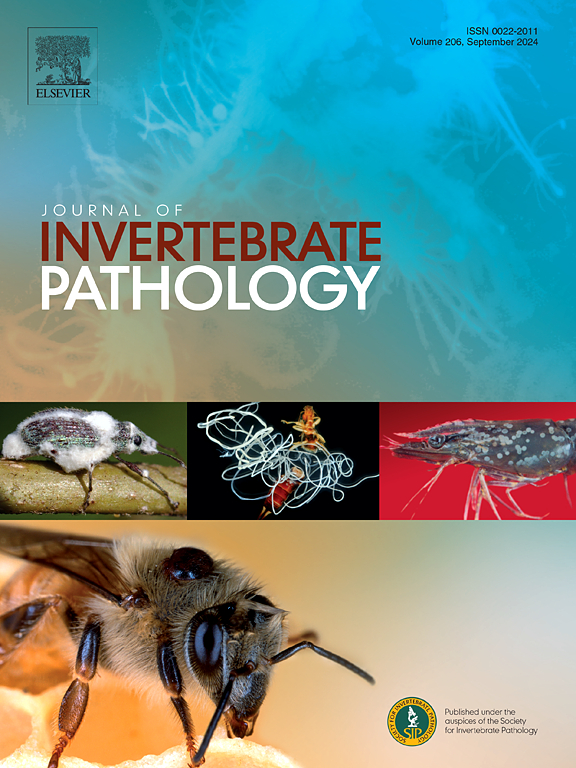Life cycle and transmission paths of the apicomplexan Aggregata valdessensis parasitizing octopus tehuelchus on the Patagonian coast, SW Atlantic
IF 2.4
3区 生物学
Q1 ZOOLOGY
引用次数: 0
Abstract
The species of the genus Aggregata are intracellular parasites that infect cephalopods. In this study, A. valdessensis descripton is expanded from cecum and intestine samples of Octopus tehuelchus by in vivo observations as well as scanning and transmission electron microscopy of gametogonic and sporogonic stages. Infection in O. tehuelchus is noticeable as white spherical cysts, visible to the naked eye. Additionally, merogony stages were found in field-collected Cyrtograpsus spp. crabs, and described from histological slides and TEM images. We established two transmission paths by coproparasitological analyses and experimental infections, confirming that the crustaceans acquire infection by feeding on octopus feces, but also by scavenging octopuses’ dead bodies. Genetic analyses using the 18S molecular marker from octopus and crab stages allowed us to to confirm that they are conspecific, establishing the complete life cycle of A. valdessensis. For the first time in the southern hemisphere, a life cycle for the genus Aggregata is elucidated, being the second worldwide.

西南大西洋巴塔哥尼亚海岸寄生章鱼的顶复合体(apiccomplex an Aggregata valdessensis)的生命周期和传播途径。
Aggregata属的种是感染头足类动物的细胞内寄生虫。本研究通过配子体和孢子生阶段的扫描电镜和透射电镜观察,从tehuelchus章鱼的盲肠和肠道样品中扩展了A. valdessensis的描述。被感染的鄂huelchus是明显的白色球形囊肿,肉眼可见。此外,在野外采集的鲎标本中发现了单性生殖分期,并从组织学切片和透射电镜图像中进行了描述。我们通过共寄生虫学分析和实验感染建立了两条传播途径,证实了甲壳类动物通过摄食章鱼粪便获得感染,但也通过食腐章鱼尸体获得感染。利用章鱼和蟹的18S分子标记进行遗传分析,证实了它们是同种的,建立了A. valdessensis的完整生命周期。首次在南半球,一个生命周期的属Aggregata被阐明,是第二个世界范围。
本文章由计算机程序翻译,如有差异,请以英文原文为准。
求助全文
约1分钟内获得全文
求助全文
来源期刊
CiteScore
6.10
自引率
5.90%
发文量
94
审稿时长
1 months
期刊介绍:
The Journal of Invertebrate Pathology presents original research articles and notes on the induction and pathogenesis of diseases of invertebrates, including the suppression of diseases in beneficial species, and the use of diseases in controlling undesirable species. In addition, the journal publishes the results of physiological, morphological, genetic, immunological and ecological studies as related to the etiologic agents of diseases of invertebrates.
The Journal of Invertebrate Pathology is the adopted journal of the Society for Invertebrate Pathology, and is available to SIP members at a special reduced price.

 求助内容:
求助内容: 应助结果提醒方式:
应助结果提醒方式:


